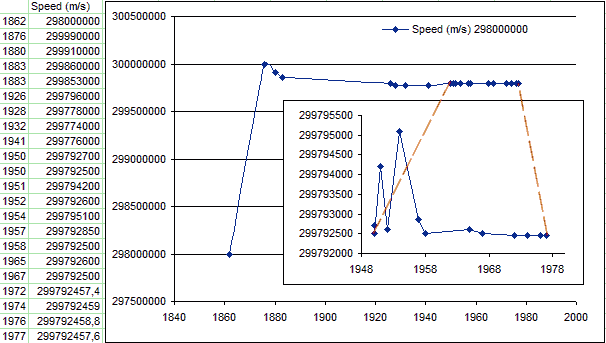This post is a reaction to recent deduction of Lubos Motl "Changes of dimensionful quantities are unphysical", presented on his blog. As Lubos belongs between conservative proponents of formal approach to theoretical physics, string theory in particular, his stance can be understood easily in this context. String theories are rather large group of quantum field theories, which are based on combination of quantum mechanics and special relativity postulates - between many others, which are specified less or more vaguely by math formalism used. Because Lorentz invariance belongs special relativity postulates, it's evident, string theory cannot derive violation its own assumptions, i.e. Lorentz invariance violation in rigorous way with compare to quantum gravity theory, which is general relativity based, so it uses a different postulate set. Therefore we can understand negativistic stance to all theories dual to Lorentz invariance, which are considering the changes in fundamental quantities, the "varying light speed" theories in particular.
In AWT Lorentz invariance is completely matter of observational perspective. The gravitational lensing can be interpreted both like manifestation of variable light speed in vacuum near massive object (an exsintric perspective of quantum mechanics), both like manifestation of constant light speed in curved space-time (an insintric general relativity perspective). The observer, which is deformed together with space-time inside of gravitational lens would have an tendency to consider light speed invariant and space-time deformed, unfortunately its rather abstract and local stance, as real observer usually cannot stay at the center of gravity lens (for example at the center of Sun or large galaxy).

The crucial point is the definition of fundamental SI units here, the meter and seconds units in particular. Until 1975 light speed was defined by using of iridium meter prototype since the second can be defined more precisely than the metre, in 1983 the metre was re-defined to be the distance light travels in a vacuum in 1⁄299,792,458 of a second, making the speed of light in vacuum a defined constant, c = 299,792,458 m/s. By AWT the omnidirectional space-time expansion can be interpreted as a fall of observable matter into black hole, the surface gradient of which is forming space-time. During this process vacuum becomes more dense gradually, so that transversal waves of light spreads more slowly through it, which the observer inside of it can interpret as an expansion of space-time. Whereas the observer which is using exsintric perspective would see the collapse of vacuum foam instead - from this reasons the cosmological constants differs so much in relativity and quantum mechanics. In SI system of units meter unit cannot change with density of vacuum and the second unit can change only if mass of cesium atoms will change with respect to kilogram unit, which may occur only, if cesium atoms will change their mass in dense vacuum in different way, then the iridium alloy. After then even gravity constant and fine structure constant may change (compare the Expanding Earth theory). The decrease of gravity constant would increase the frequency of supernovae used as a standard candles for measurement of distance and change our understanding of acceleration of Universe expansion observed. Recent measurements of a possible variation of the gravitational constant showed an upper limit for a relative change of 5•10-12, while Expanding Earth theory needs a variation ten times higher than that measured. Changes in dimensionless fine structure constant observed in distant quasars and Oclo reactor are still unconfirmed.

From insintric perspective the massive bodies would expand together with space-time, but because space-time is preexpanded already, massive objects smaller then human/CMB distance scale (1,7 cm) would collapse slowly then the vacuum and they would shrink effectively, whereas larger object would expand faster in the form of radiation (i.e. they would evaporate in vacuum into bosons), until they fill the volume of the whole universe like gummi bears inserted into hot watter. It's evident, if we would measure the distance by wavelength of light, this distance wouldn't change, but the large massive objects would expand gradually and they would evaporate losing their mass. This prediction of AWT was confirmed recently, because iridium meter prototypes are still used for fitting of interferometers results.

The changes in kilogram prototype seem to be consistent with this finding, although the "Shrinking Kilogram Mystery" can be the consequence of abrasion due the primitive and somewhat drastic "cleaning methods", especially the usage of hot vapor, followed by mechanical wiping (note that the poor etalon is even manipulated without gloves). Iridium-platinum alloy is soften, then the chrome plated steel - so I'm a bit surprised personally, the changes in kilogram prototype mass aren't just a much bigger.


When rigid body meter prototype is used, the light speed could slow down gradually, because of increasing vacuum density with compare to matter density. From historical observations follows, such possibility cannot still be excluded with certainty.

From implicate topology follows, every system of physical quantities will remain always inconsistent by definition - if it would be fully consistent, we could replace all quantities by single one. It means, the change in one constant will affect the others in unpredictable way from less or more distant perspective. Analogous situation exists in theories based on at least two mutually inconsistent postulates: if these postulates will be consistent, we could replace them by single one, thus obtaining a tautology. This means, no theory can remain universally valid, or it couldn't be falsified (compare the AWT approach to Goedel's theorems). Therefore the finding of universally invariant quantity corresponds the finding of generally valid TOE. By AWT such quantity in gradient driven reality could serve the quantity of change as defined by polyomino algebra.







